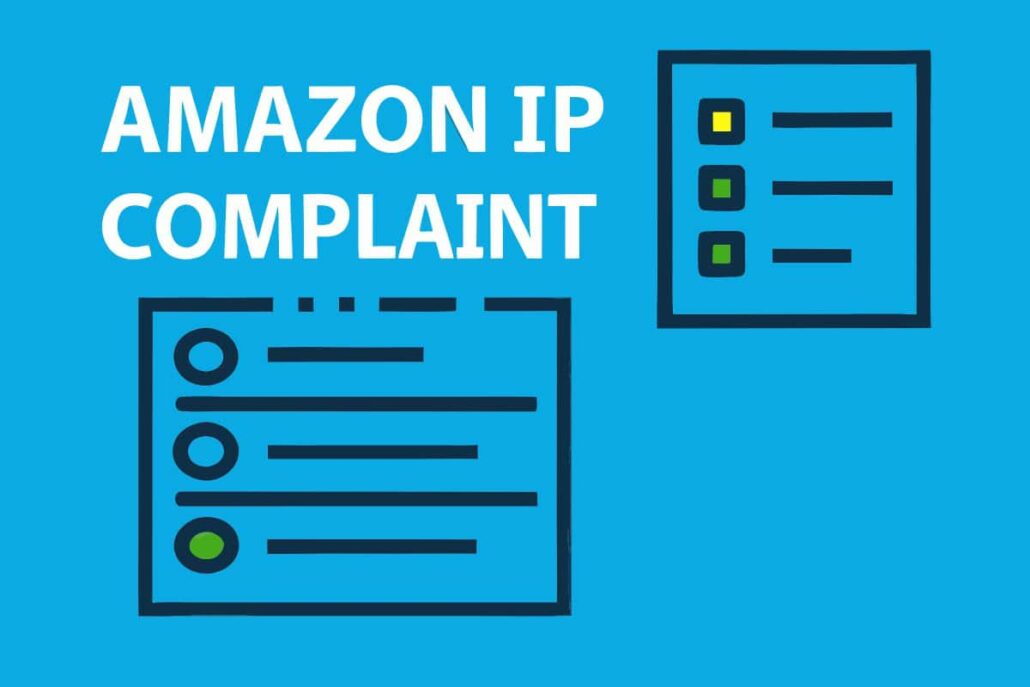
Amazon connects millions of sellers to buyers every hour, but that global reach also opens the door to trademark and copyright claims. One slip can lead to a blocked listing or even a locked account, so learning the basics of IP complaints now is smarter than fixing a mess later.
An Amazon IP complaint happens when a brand owner sees a listing they think copies, misuses, or steals their protected property, whether its a logo, design, or even a product image. Any claim that sticks can pull your listing off-page fast and may lead to penalties if it keeps happening.
This guide breaks down why IP complaints happen, what red flags to watch for, and what steps you can take today to shield your shop from sudden headaches.
What Are Amazon IP Complaints?
Amazon IP complaints are formal claims telling the site that a seller has crossed the line into somebody elses protected ground. Rights holders usually point to one of three big issues when they file.
- Copyright infringement means a seller used creative work without permission, and that can cover everything from photos and logos to entire product descriptions. Snapping a rivals image, copying text from a website, or selling knockoff merch that shows famous art all count.
Trademark violations happen when a seller uses a brand’s name, logo, or symbol without the owner’s okay. This includes selling fake items, slipping protected words into product titles, or making goods that mislead shoppers about who made them.
Patent infringement refers to copying or using a protected invention without permission, whether in the item’s look, how it works, or even the way it is built.
Amazon treats these claims seriously because federal law, including the Digital Millennium Copyright Act, forces them to act quickly. Usually, when a report lands, Amazon pulls the listing right away and sorts things out later.
How Amazon’s IP Complaint Process Works
Once a complaint is filed, Amazon follows a step-by-step plan to protect brand owners while also giving the accused seller a fair shot.
The Initial Complaint
Brand owners can submit an online report or send a formal letter to Amazons legal team. Their submission needs clear details about the alleged violation plus proof, like photos or documents, that back up the claim.
Amazon rarely checks whether an infringement complaint is legit before acting. If the report looks complete and matches the right template, the company often yanks the listing within a day or two.
Notification to Sellers
Sellers learn about the removal through an email that spells out the reason in plain language. The message usually covers:
- A summary of the complaint itself
- The name of the rights holder who reported it
- Steps you can take to respond or appeal
- A heads-up that repeated issues could affect your whole account
Seller Response Options
After getting the email, you can choose what happens next:
- Do nothing. The listing stays offline, but the matter ends there without further action against your account.
- File a counter-notice. Use this if you feel the claim is wrong; youll need proof that you own the merchandise or show the complaint is false.
- Reach out to the rights holder. Sometimes a quick phone call or email clears up the problem outside of Amazons process.
- Get legal help. If money is on the line or the issue is tough to untangle, a lawyer can guide you through the next steps.
Common Triggers for IP Complaints
Knowing what sparks most IP complaints can save you time and money. Check out these big trouble spots:
Using Unauthorized Images
Lots of sellers accidentally post copyrighted pictures. This happens when they grab:
- Product shots from a brand website
- Photos seen in another seller’s listing
- Stock art not covered by a license
- Screenshots from movies, TV shows, or games
Selling in Gated Categories
Many brands police Amazon hard, watching who sells their stuff. These热门类别often get extra attention:
- Electronics and accessories
- Beauty and personal-care items
- Toys and games
- Apparel and fashion goods
- Home and garden products
Keyword Stuffing with Brand Names
Stuffing rival brand names into your title for more clicks can land you in court. This trick, called keyword stuffing, breaks Amazons rules and trademark law.
Selling Modified or Bundled Products
If you mix or alter a trademarked item, or toss it into a bundle, the brand may still complain-especially if the change damages its name.
How to Safeguard Your Amazon Business
It is always smarter to stop trouble before it starts than to fix complaints after they blow up. Try these down-to-earth steps to keep your Amazon store out of hot water:
Do Your IP Homework
Before you add a single item, scan for hidden IP problems:
- Run the USPTO database for active trademarks
- Grab a quick look at patents in your product area
- Double-check that you hold valid licenses for branded goods
- Make sure every image is either yours or cleared for use
Choose Suppliers Wisely
Connect only with suppliers who hand you:
- Paperwork showing they own the right to sell each item
- Certificates proving branded products are genuine
- Clear notes on any IP limits you must respect
- Invoices and receipts you can file for later reference
Build Unique Listings
Instead of copying, create original pages for each product:
- Snap your own clear photos
- Write fresh titles and bullet points
- Feature your brand name and logo front and center
- Leave competitors listings alone
Know Amazon’s Rules
Finally, read and reread Amazons IP rules. They shift often, and saying you did not know will not save you from a takedown.
Stay Organized with Detailed Records
Keeping clear, up-to-date records saves time and money when you face a dispute. Store copies of the following in a single folder—cloud or physical.
- Supplier contracts, agreements, and every invoice
- Certificates proving each product is genuine
- Emails and chat logs with manufacturers
- Any licensing or reseller permission papers
- Photos showing when and how you got the items
What to Do When You Get an IP Complaint
Receiving an intellectual property complaint can feel overwhelming, but a fast, calm response limits the damage.
Step 1: Evaluate the Complaint
Read the notice closely and ask yourself:
- Is the claim based on fact or a misunderstanding?
- Do you own evidence that proves your right to sell?
- Does the story contain obvious errors you can correct?
- Could fixing the problem take only a few hours?
Step 2: Gather Evidence
Pull together anything that backs your case, including:
- Purchase invoices from approved distributors
- Product authenticity certificates received at import
- Relevant emails or photos from the supplier
- Documents showing that your product stays within agreed rights
Step 3: Respond Based on What You Find
Pick a reply strategy guided by what you discover:
- Valid Complaint: Take down the listing, contact the claimant to say sorry, and update your process so it never happens again.
- Weak Complaint: Submit a counter-notice with your proof, but stay alert because the other side may still choose to sue.
- Confusing Case: Hire an intellectual property lawyer to review your facts before sending any notice.
The Cost of IP Violations
Ignoring or mishandling IP issues can drain profits and slow inventory while Amazon suspends your account.
Immediate Impacts
- Lost sales from removed listings. When a product is yanked, every minute spent gone is money down the drain.
- Frozen inventory in Amazon warehouses. Stuck stock can mean storage fees and no cash flow until the issue clears.
- Account restrictions affecting other products. One flagged item can put the brakes on your whole catalog.
- Time and resources spent responding to complaints. Answering emails, gathering proof, and talking to support eats up hours that could go to growth.
Long-term Consequences
- Permanently banned listings. Once an item is bla cklisted, it rarely returns.
- Account suspension or termination. Too many strikes can lock you out completely.
- Legal action from rights holders. Brands looking to protect their name may go straight for a lawsuit.
- Damaged seller reputation and metrics. Negative scores make it tough to rank or even win the Buy Box again.
- Difficulty launching new products. A troubled account raises red flags for every new SKU you want to invest in.
Legal Costs
- Attorney fees for complex disputes. Quality legal help costs, and IP battles can drag on for months.
- Potential damages if found liable for infringement. Court awards can dwarf the original profit you expected.
- Costs of redesigning products to avoid future issues. Fresh molds, packaging, and labeling all eat up budgets.
- Lost opportunity costs from delayed product launches. Every day spent in the courtroom is another day a competitor moves ahead.
Best Practices for Ongoing Protection
Keeping IP trouble out of your way asks for constant care and a solid plan every seller needs.
Regular Monitoring
- Check your listings daily for any changes you did not approve.
- Keep an eye on how your rivals present similar products.
- Watch out for fresh trademarks and patents that pop up in your space.
- Every few months, touch base with suppliers to ensure they still meet your standards.
Team Training
If you hire staff or use freelancers:
- Teach everyone the basics of intellectual property and your company rules.
- Set step-by-step guidelines for research and creating product pages.
- Require senior approval before launching new items or marketing designs.
- Write down the training material and store records for future reference.
Technology Solutions
Think about adding these helpful tools:
- Use image-scanning software to spot possible copyright conflicts.
- Subscribe to a service that alerts you when someone files a similar trademark.
- Browse patent databases before finalizing a product idea.
- Leverage Amazon tools that flag potential IP problems during listing.
Moving Forward: Building a Sustainable Business
Staying compliant with Amazons IP rules lets you grow without sudden setbacks. Build simple repeatable processes that guard your brand while you scale.
Invest in your own name and custom products instead of only reselling others items. Owning the brand usually brings bigger margins and shields you from copying. If you do sell established labels, get written permission and keep clear records.
IP complaints can feel overwhelming, but theyre easier to handle when you know the steps to take and plan ahead. By learning the steps, setting up basic safeguards, and replying quickly when a concern pops up, you give your Amazon store a strong shield and keep room to grow.
Keep one eye on fresh rules in IP law and Amazons ever-changing policies, talk regularly with trusted suppliers, and reach out to a skilled lawyer whenever a problem starts to feel too complicated. This forward-thinking mindset turns IP protection from a chore into the backbone of your long-term success on the Amazon marketplace.

